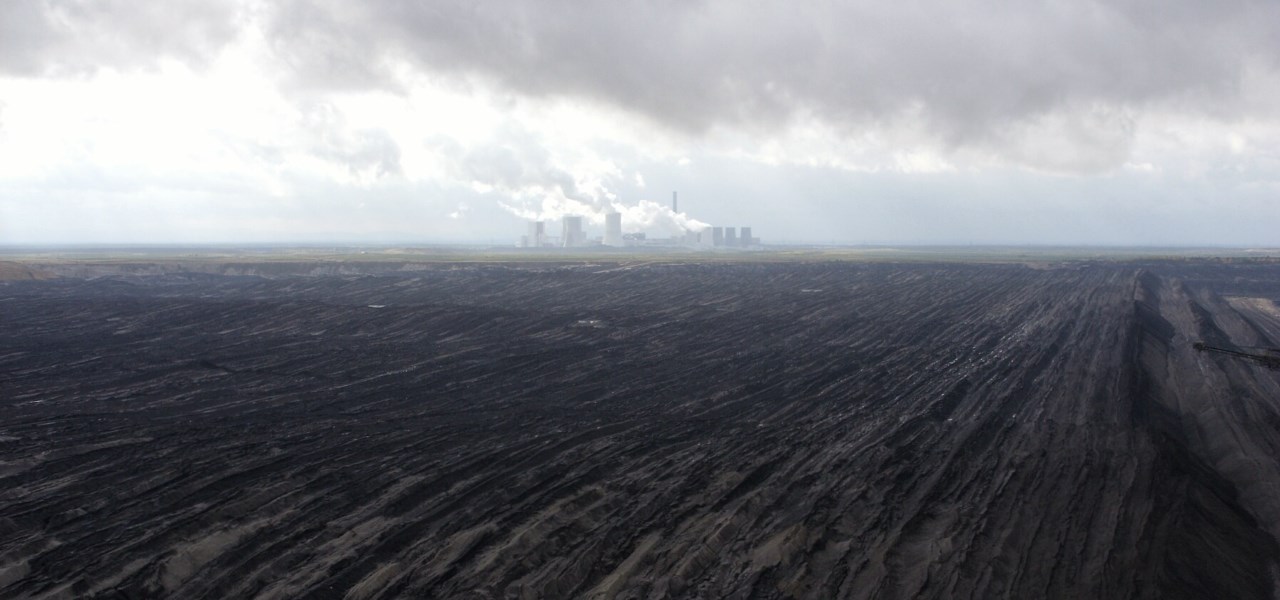Swedish utility Vattenfall is looking for a buyer for its lignite assets in Germany. In addition to interest from the Czech Republic, environmentalists would like to take over the assets – in order to leave them in the ground. Craig Morris reports.

Vattenfall-owned open pit mine in Saxony. Greenpeace wants to invest here in order to divest. (Photo by Julian Nitzsche, modified, CC BY-SA 4.0)
A year ago, Swedish elections produced a more environmentally conscious coalition. One of its first decisions was that the state-own utility Vattenfall should live up to its green rhetoric at home in its international business as well. Specifically, the company is now being forced to sell its lignite power plants and coal fields in Germany.
One potential buyer is Czech utility CEZ, which also runs coal plants. Because the assets in question are located close to the Czech border, this takeover makes business sense. Another bidder is reportedly private investment firm X2 Resources. In mid October, the Czech press also reported that the country’s richest person – Petr Kellner – was also interested in buying these assets along with another Czech holding that recently acquired Mibrag, a lignite mining firm that does business in these German coal fields. The asking price is reportedly 3.2 billion euros. Kellner is worth several times that much, so along with the holding firm financing, that amount should not be difficult for him to produce.
The driver behind Czech interest was initially a law from 1991, stating that the lignite fields in northern Bohemia cannot be expanded (report in German). However, it seems that the government in Prague reversed that position in mid October to allow some of these domestic coalfields to be extended (report in Czech). The plan is still just a proposal, not a law, but it could also affect Czech interest in German lignite.
Greenpeace Nordic’s plans are a bit more surprising. The environmentalists originally announced intentions to take over both the power plants and the coalfields in order to shut everything down. Coming up with billions will be hard work, so the campaigners began by questioning the amount: “I believe in reality it will be much lower,” Greenpeace Nordic’s Annika Jacobson stated when the environmentalists first expressed interest in a takeover.
Now, we see, however, that Greenpeace has changed its tune a bit (Statement of Interest as a PDF). The idea is not to have Greenpeace take over ownership, however. Rather, the Beyond Lignite Foundation would be created based on the model of RAG, a foundation that has helped phase out hard coal mining in Germany (which closes in 2018).
Local communities are not happy about Greenpeace’s proposal. They fear job losses. But the organization bases its bid partly on a study published in April (in German). It foresaw a gradual closure in power production from lignite plants by 2030, when the last ones would go off-line – not an immediate shutdown. Roughly half of the lignite left in the current coalfields would remain in the ground.
Roughly 8,200 people currently work at both power plants and lignite fields owned by Vattenfall in Germany. The paper did not make any specific estimates for net job effects. Rather, it referred to a previous study conducted for Vattenfall and concluded, based on this phase out scenario, that roughly half of these people would not find work in the area.
In light of the global coal downturn, the environmentalists now believe the actual value of Vattenfall’s lignite assets in Germany is “less than half a billion euros.” Why would Vattenfall accept such a low bid? One reason is that the Swedish state owns the company. If Sweden wants to make good on its international climate pledges, accepting Greenpeace’s proposal would be a major step forward. The Swedes could decide that accepting Greenpeace’s offer would be part of its climate contribution. It could also ask the German government to chip in, and international climate funding could be sought. A main focal point would have to be invigorating the local communities affected. But such a campaign could set a precedent for divestment campaigns worldwide.
Craig Morris (@PPchef) is the lead author of German Energy Transition. He directs Petite Planète and writes every workday for Renewables International
According to the (German) PV Magazin City Group has excluded Greenpeace from the bidding process:
http://www.pv-magazine.de/nachrichten/details/beitrag/greenpeace-als-bieter-fr-vattenfalls-braunkohlesparte-ausgeschlossen_100020967/
Squirrel action:
http://yle.fi/uutiset/greenpeace_activists_divert_helsinki-bound_coal_ship/8423781
This is completely ignorant speculation on my part, but I had been wondering whether Greenpeace had been also hoping to get some inside knowledge and leverage in the negotiations, for example regarding requirements for remediation. Are remediation funds for these gigantic ditches being accumulated, and at a realistic level so as to leave behind something more useful than orange lakes seeping into the water supply? Would a Czech operator pay into such a fund? Or would the mining company trick, “Oops, I’m bankrupt” be applicable?